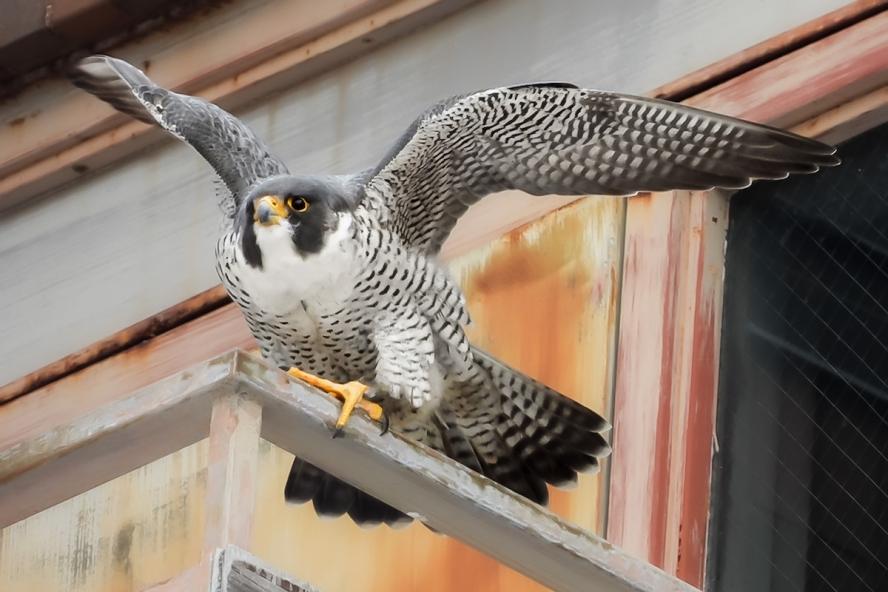-
About
- Leadership & Faculty
- News & Events
-
Academics
- Graduate
- Advanced Clinical Training
- Continuing Education
- Academic Offices
-
Student Life
-
Research
-
Hospitals & Clinics
- Emergency Care
- Hospital Services
-
Community Outreach
- Volunteer
Back to its Natural Habitat
Peregrine falcon rehabilitated at Cummings School returns to its roots, finds a mate

An adult male peregrine falcon arrived at Cummings School of Veterinary Medicine’s Tufts Wildlife Clinic in February 2021 after an apparent collision with a motor vehicle. Found in a well-populated area of Medford, Massachusetts, it had a dislocated elbow, a severe laceration above its tail, and a significant beak injury, says Dr. Maureen Murray, V03, director of the Wildlife Clinic and associate clinical professor in the Department of Infectious Disease and Global Health.
“The laceration required quite a lot of sutures and the falcon had fractured and lost the sharp point of its beak, which was also split up the middle,” she explains. The clinic’s staff popped the elbow back into place and bandaged it and sutured the laceration. Both healed well. The beak needed significant time because there’s nothing that can be done but give it time to grow back.
“Depending on how much of the beak is injured, they have the potential to heal as long as the layer of tissue that produces the outermost keratin layer is not compromised,” Murray explains. “The keratin is like our fingernails, only tougher. That material is being produced by the underlying layers of the beak so we had to wait to see if it would heal itself.”
Eventually the beak reformed, including the crack in the middle. After six months of healing at Cummings School, it was banded by the Massachusetts Division of Fisheries and Wildlife (MassWildlife) and released in August.
According to Mass Audubon, peregrine falcons can fly up to 240 MPH. Coupled with their sharp talons, they are efficient hunters, able to capture and kill other birds in flight. After its population declined because of DDT [banned by the EPA in 1972], efforts to restore the peregrine population by breeding in captivity have resulted in approximately 30 nesting pairs in Massachusetts. They prefer rocky cliffs but are often now sighted on the tops of buildings and bridges.
Recently, one of the Wildlife Clinic’s volunteers spotted the rehabilitated peregrine falcon in an adjacent town to its release location. Confirmed by its identification band, the peregrine had found a mate and they were occupying a nest.
Sighting former patients in the wild is a rare occurrence for the Wildlife Clinic. “Most aren’t marked when we let them go,” Murray shares. “Because these species are still of conservation concern, they are more closely monitored by Mass Wildlife, and only those species that are banded, or released with a transmitter like some protected turtle species, can be positively identified.”
“It’s highly encouraging news to see that this bird has survived after its rehabilitation and release,” Murray says. “He seems to be doing what we had hoped … working to make more peregrine falcons.”
If you have found orphaned, injured, or sick wildlife, visit the Tufts Wildlife Clinic website for instructions, or contact either your local animal control officer or MassWildlife.
“We’re glad when the public wants to help, but please be careful,” Murray cautions. “Wildlife can be dangerous and often react defensively when approached by humans.”
Department:
Tufts Wildlife Clinic